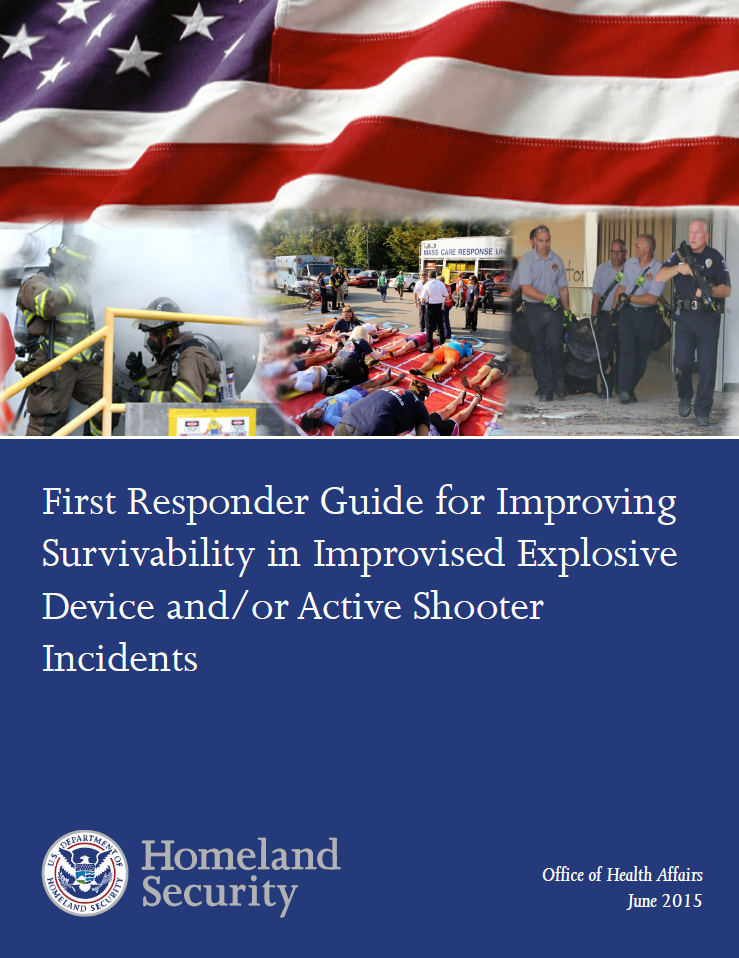Creating a Casualty Care Culture
To get started, or to enhance your existing casualty care culture in your agency, Chief Perry of the University of North Carolina—Chapel Hill, Police Department, shares why casualty care preparation and training is critical to an organization. After you watch this video, explore the “How” written by Assistant Chief Cory Tchida of Georgetown, Texas, Police Department, to ensure that your agency is considering and implementing the necessary procedures and training to be prepared for any critical incident.
*At the time of the taping for this video, Chief Perry worked for the Florida State University Police Department. He is currently the Chief of Police for the University of North Carolina—Chapel Hill. He continues to be a valuable member of the VALOR Program team.
Provide the right equipment.
TCCC is more than just tourniquets! Officers should be properly equipped to provide care for extremity hemorrhage, torso hemorrhage, as well as tension pneumothorax.
-
Tourniquets
- Officers should have more than one tourniquet. One should always be on their person and readily available and more should be available in go bags in vehicles. One is none and two is one!
- If the only tourniquet they have is in their vehicle, then they do not have a tourniquet.
- Combat Gauze
- Modular bandages
- T3 Bandages
- Chest seals
- Gloves
- Face shield
Provide quality equipment.
TCCC gear and equipment is not the domain to provide low quality gear just because it is cheaper. The cost of a life cannot be measured in dollars. Provide quality equipment from reputable manufactures and vendors. Be wary of items such as knock-off or outright fake tourniquets!
Equipment
Provide the right quantity of equipment.
No officer knows when their worst day is going to happen. Make sure they have enough of the high quality TCCC equipment to treat multiple injuries, multiple people, or both. Consider having individual treatment bags within the go bag that can treat one person or one injury. Each bag might contain a pair of gloves, QuikClot, a chest seal, a tourniquet, and a bandage capable of treating hemorrhage.
Provide current equipment.
As time passes, new equipment is released, new techniques are made available, and old equipment expires, ages, or becomes obsolete. Make sure officers are equipped with the most current equipment available.
Provide initial training.
Any TCCC gear issued should be accompanied by initial training by a qualified instructor. Training should include lecture and application. Training tourniquets can be self-applied by students or to other students. Consider purchasing simulated wound blocks so students can practice packing and wrapping wounds.
Provide sustainment training.
This is the training that can and should occur at the shift or unit level. Supervisors should be provided with training TCCC gear. During shift briefings or shift trainings, supervisors can challenge their officers to apply a tourniquet properly, pack a wound properly, or diagnose a trauma and treat accordingly. Remember, proper repetition and consistency builds competence. Competence builds confidence.
Training
Provide refresher training.
This is the time to learn the new equipment and techniques or to formally refresh on the current equipment and techniques. This training should be formalized as to content and frequency.
What gets inspected gets accomplished.
Regular and routine inspections by leadership should occur to make sure officers have what they need and know how to use it.
Frequently Asked Questions
An overarching tourniquet training and bleeding control policy would be beneficial to implement in an agency. This will limit the liability of the agency and hopefully prevent death among officers or citizens if one is wounded. This will also limit liability in an officer-involved shooting if they render aid efficiently to suspect.
Making sure your personnel are trained, documenting initial training and yearly updates, will deter any liability concerns. Not having a program or protocol in place creates more liability then creating one.
There are various organizations and entities that offer funding and grant opportunities for agencies to acquire casualty care equipment. Inquire with local community groups, as well as state and federal entities such as The Department of Justice, Bureau of Justice Assistance.
The VALOR Program’s casualty care curriculum and resources are based off the TCCC model. TCCC approves certain brands in the market based on rigorous research and testing on the products, ensuring that they are only endorsing products that will be reliable and effective in the field. Therefore, though there are other products on the market, VALOR features only TCCC-approved products in the toolkit.






